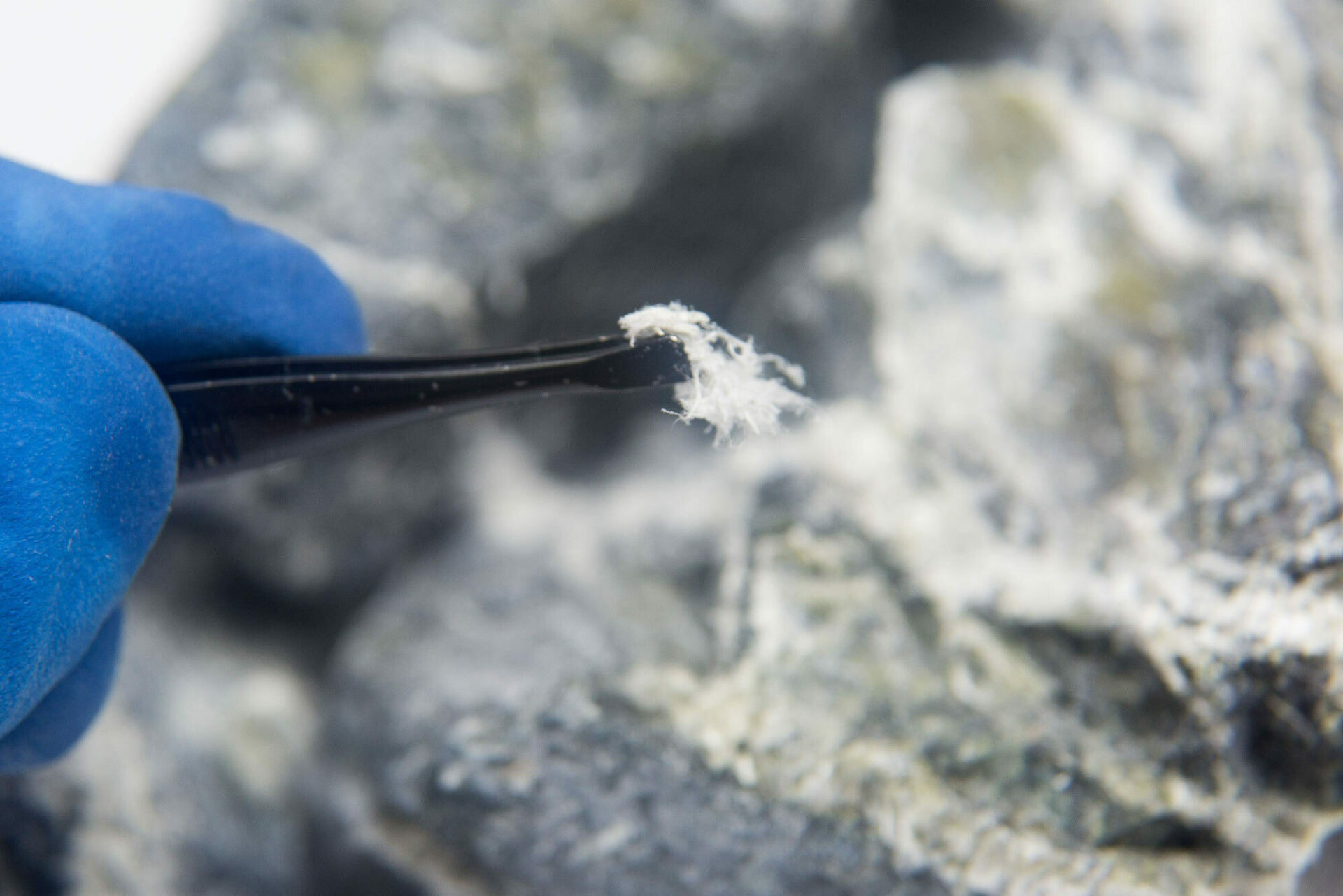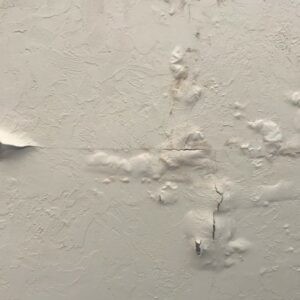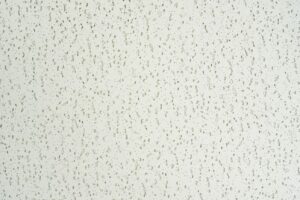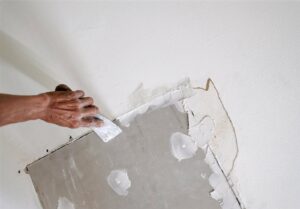For homeowners, one of the most important parts of taking care of your home is understanding any potential health risks associated with it. Asbestos-containing drywall can be an unexpected hazard that may lurk in your walls; but what are the indicators? In this blog post, we’ll provide a closer look at asbestos drywall and discuss the various indicators that you should test your home for asbestos before proceeding with any renovation work. We’ll also discuss proactive steps homeowners should take to protect themselves from any risks posed by exposure. If you’re concerned about what could be hiding in your own home, read on to learn more about recognizing asbestos and protecting yourself from its effects.
What is asbestos drywall?
For many decades, asbestos drywall was a popular choice of building material thanks to its ability to withstand fire and extreme heat. However, its use has declined in recent years due to its dangerous health risks. Asbestos fibres can be released into the air when drywall that contains it is disturbed, which can lead to serious respiratory illnesses and cancer if inhaled over long periods of time. Although the use of asbestos in building materials is now heavily regulated or banned in many countries, it’s important for individuals to be aware of the potential health risks associated with asbestos drywall if they’re planning to renovate or work with older buildings — and to be aware that any home built prior to 1990 legally needs to be tested for asbestos prior to any work being done.
How to identify asbestos in your drywall
Drywall is a common building material used in many homes and buildings, but have you ever stopped to consider the type of drywall or insulation that is used? Some types of drywall and insulation may contain asbestos, which can pose health risks if disturbed. If you are unsure about the type of drywall or insulation in your home or building, don’t take any chances when it comes to your health— it’s best to consult a professional to ensure the safety of everyone involved. Consulting a professional is especially important in areas where environmental factors can accelerate wear and tear. For instance, Victoria’s climate impact on drywall can cause issues like moisture buildup, which may increase the likelihood of asbestos-containing materials becoming a health hazard if they degrade. Taking precautions and seeking expert advice can help safeguard your property and the well-being of those who occupy it. Additionally, understanding Victoria’s weather impact on drywall is crucial for implementing proper maintenance strategies. The region’s varying humidity levels and seasonal temperature changes can exacerbate the deterioration of drywall, making it even more important to proactively address potential hazards. By staying informed and addressing issues early, you can prevent costly repairs and ensure a safe, healthy environment for everyone. Taking proactive measures not only helps mitigate health risks but also ensures the structural integrity of your home remains intact over time. By consulting qualified professionals, you can explore the best drywall options for your home, tailored to withstand specific environmental challenges like those found in Victoria’s unique climate. Investing in high-quality, durable materials now can save you from expensive repairs and health concerns in the future. Furthermore, staying proactive by adopting proper drywall installation tips can help mitigate potential risks and extend the lifespan of your walls. Ensuring correct installation techniques and using high-quality, moisture-resistant materials can make a significant difference, especially in climates like Victoria’s where environmental challenges are prominent. Regular inspections and timely repairs are also key components of effective drywall maintenance, helping to prevent small issues from escalating into major concerns.
When determining if there’s a possibility of asbestos in your drywall, there are certain things to be aware of. One of the most important things is the age of the building. Asbestos was commonly used in construction prior to 1990, so if the building was built before then, it’s worth investigating. Another important factor is the location of the drywall. Asbestos was often used in high-traffic and high-heat areas such as garages, basements, and utility rooms.
Common signs your drywall may contain asbestos
Asbestos is a mineral that was once commonly used in building materials due to its fire-resistant properties. Unfortunately, it was later discovered that asbestos exposure could lead to serious health issues, including lung cancer and mesothelioma. While asbestos insulation has an orange tint, there are no visual cues for asbestos in drywall. If you have a home or building that was constructed before 1990, it is possible that the drywall may contain asbestos. In this case, we highly recommend having your wall professionally tested for asbestos before you complete any work disturbance. If you are hiring a company to work on that drywall, the Workers Compensation Act requires that the drywall tests negative for asbestos before any businesses and their employees can work on it.
If you suspect a part of your home may contain asbestos, check those areas periodically for tears or water damage. If you discover slightly damaged material, limit access to the area and do not touch or disturb it. If the damaged material contains asbestos, or if you are going to make changes in your home that might disturb it, professional repair or removal is needed. It’s important to prioritize your safety and consult with licensed professionals trained in handling hazardous materials. Improper handling of asbestos can pose serious health risks, so always follow expert advice and stay informed about best practices for home maintenance and improvement tips. Regular inspections and cautious planning can help you maintain a safe living environment while addressing potential hazards.
If asbestos is found in the drywall, the law requires employers to hire a qualified abatement contractor to remove it. A qualified person must also certify that the worksite air is safe, following the completion of the asbestos removal work. A notice of project must also be submitted to WorkSafeBC for all asbestos work.
Only professionals experienced in asbestos abatement activities can undertake this removal, and you can’t start any repair until the asbestos is removed. WorkSafeBC is implementing mandatory training and licensing for asbestos abatement work to help keep workers safe. Asbestos abatement contractors must be licensed to operate in British Columbia, and anyone performing asbestos abatement work must complete this mandatory safety training.
Depending on the nature of the job, sometimes abatement can be avoided and Drywall Medic may be able to offer a cost-effective solution. For example, if you are wanting to have the texture removed from the ceilings in your home but the texture contains asbestos, we can simply add an additional layer of drywall to the ceilings while leaving the asbestos drywall safely sealed and contained. If it is a broken drywall repair that you need, it is always worth getting a free quote to cover the surface with a second layer of drywall. This approach not only saves time and money but also ensures a safe and efficient resolution to the issue without the need for extensive abatement processes. Additionally, when applying a second layer, we can incorporate different types of drywall finishes to achieve the exact look and feel you desire for your space. Whether it’s a smooth surface or a more textured appearance, our team can tailor the finish to suit your preferences and enhance the overall aesthetic of your home. This method not only eliminates the need for messy asbestos removal but also provides an opportunity to revitalize your space with a fresh and updated appearance. For homeowners looking to address smaller issues, our team is also happy to provide drywall patching and fixing tips to help you tackle minor repairs on your own. By combining professional solutions with DIY guidance, we aim to make the process as seamless and budget-friendly as possible while delivering the high-quality results your home deserves. This method not only eliminates the need for messy removals but also opens up new design possibilities for your space. By exploring the pros and cons of drywall textures, you can choose a finish that perfectly complements your home’s style while staying within your budget. Our team is here to guide you through the decision-making process, ensuring the final result is both beautiful and functional.
How to test for the presence of asbestos in your home
If you suspect that your home may contain asbestos, it’s important to test for it as soon as possible. Hiring a professional is the safest option for you and your family — Drywall Medic can do this testing, with results determined in a lab. A technician will come out to take a sample for whatever is being removed, and we send that technician to an asbestos course where they learn to safely remove the samples. As a precaution, Drywall Medic will cover the area where the sample has been removed as a precaution, and if it is a larger area, we will seal this off entirely. It takes 1-2 days at the lab for results to come back. If the sample is positive for asbestos, you will need to hire a company who can do removal and abatement of asbestos before the drywall repair can be done. If the sample is negative, our team can proceed with the drywall repair.
Legal and regulatory landscapes related to asbestos
With the awareness of asbestos health risks, the Canadian government has set up strict legal and regulatory requirements to handle asbestos-containing materials (ACMs). Property owners and contractors are at the forefront of ensuring compliance with these requirements. Property owners have the responsibility to identify ACMs in their properties, inspect them, and ensure that they are in good condition or remove them safely. Removal of any material with ACMs must be done properly — all drywall is date stamped, so if you try to take it to a regular dump you will get turned down if the drywall is older than 1990. In the meantime, in the time you spend figuring out where to take the material yourself, you have been exposed to some serious health risks. When it comes to handling potentially hazardous materials like asbestos, safety should always be a top priority, and professional abatement is the best option.
Contractors working with ACMs must be licensed and trained in handling asbestos, and they must take the necessary precautions when working with and disposing of ACMs. By following these requirements, property owners and contractors can remain compliant and support public health and safety while fulfilling their responsibilities. You can read more about safe work practices around Asbestos on the WorkSafe BC Website.
With the alarming potential health risks that asbestos drywall may present, it is important to understand the related risks and how to identify potentially dangerous materials. Knowing when your house was built and conducting professional, proper testing if you are unsure of the presence of asbestos is a key aspect of determining whether you have asbestos drywall in your home. Furthermore, testing for the presence of asbestos should only be done by qualified professionals due to its potentially toxic exposure risk and in order to protect yourself and your family. Lastly, being aware of best practices for safely removing and disposing of potentially hazardous materials such as asbestos is essential — especially given legal requirements — yet something important that often gets overlooked when assessing potential hazards in properties.If you’re ever unsure about whether or not your home has asbestos-containing drywall, it’s always a good idea to have an expert come in and take a closer look! Drywall Medic has expertise in identifying asbestos and repairing drywall in Victoria, BC and surrounding areas, so don’t hesitate to reach out with any questions you may have. We are also experienced in larger renovations for your home, and can be your trusted renovation partner for all your big projects — contact us today to learn more.




